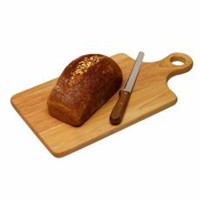|
Dietary Fiber: A Key to Senior WellnessDietary fiber consumed daily by the average American of all ages is about half the recommended minimum daily requirement of 25 to 30 grams per day. 
This shortfall contributes to many diseases, particularly among the elderly. Some of these are cancer of the colon, high blood cholesterol, arteriosclerosis, diabetes, diverticulitis, constipation, hypertension, obesity, and gallstone formation. We will discuss some of these in detail. Dietary fiber is found in fruits and vegetables, nuts and grains. It is not found in dairy products, eggs, meat, seafood or poultry. There are two kinds of fiber; soluble and insoluble and many foods contain both. Each has a separate function. Soluble Fiber...It's function is to bind with fatty acids and slow the stomach emptying time so that it has more time to release and absorb sugar. Sources
Soluble fiber can control diabetes by regulating blood sugar. It also helps reduce risk of heart disease by lowering LDL ant total cholesterol. Insoluble Fiber...It's function is to control and balance acidity in the intestines and move bulk through the intestines. Sources
How Dietary Fiber Fights Disease
Getting into the high fiber habit You don't have to do this all at once. Start by replacing white bread with whole grain bread, white rice with brown rice. Add more beans and legumes, veggies, fruits, seeds and nuts. Any foods with more than 4 grams per serving are categorized as food high in fiber. Make a habit of reading nutrition labels in the grocery store. One of the most popular and highly touted breakfast cereals has less than one gram per serving while some high bran cereals have as much as 12 grams per serving. The popular ones are highly fortified with vitamins which you should be getting from whole foods. Substitute nuts or dried fruits for regular snacks. Pecans and walnuts are very high in fiber. Two medium dates have four grams of fiber and dried apple rings and apricots are excellent sources. If you want to get a lot at one time try split pea soup or any kind of canned beans. Here are two extreme examples of fiber for breakfast: Two eggs and bacon with two slices of white toast contain less than 1.5 grams of fiber. All Bran cereal with a sliced banana and one slice of whole grain bread contain 18 grams of fiber, well over half the daily requirement. Get into the fiber habit. You will like it and you will feel good and nothing is more important than feeling good. Return from Dietary Fiber to Diet
|





